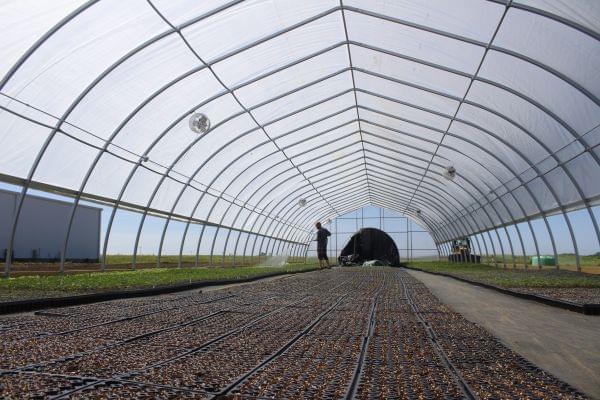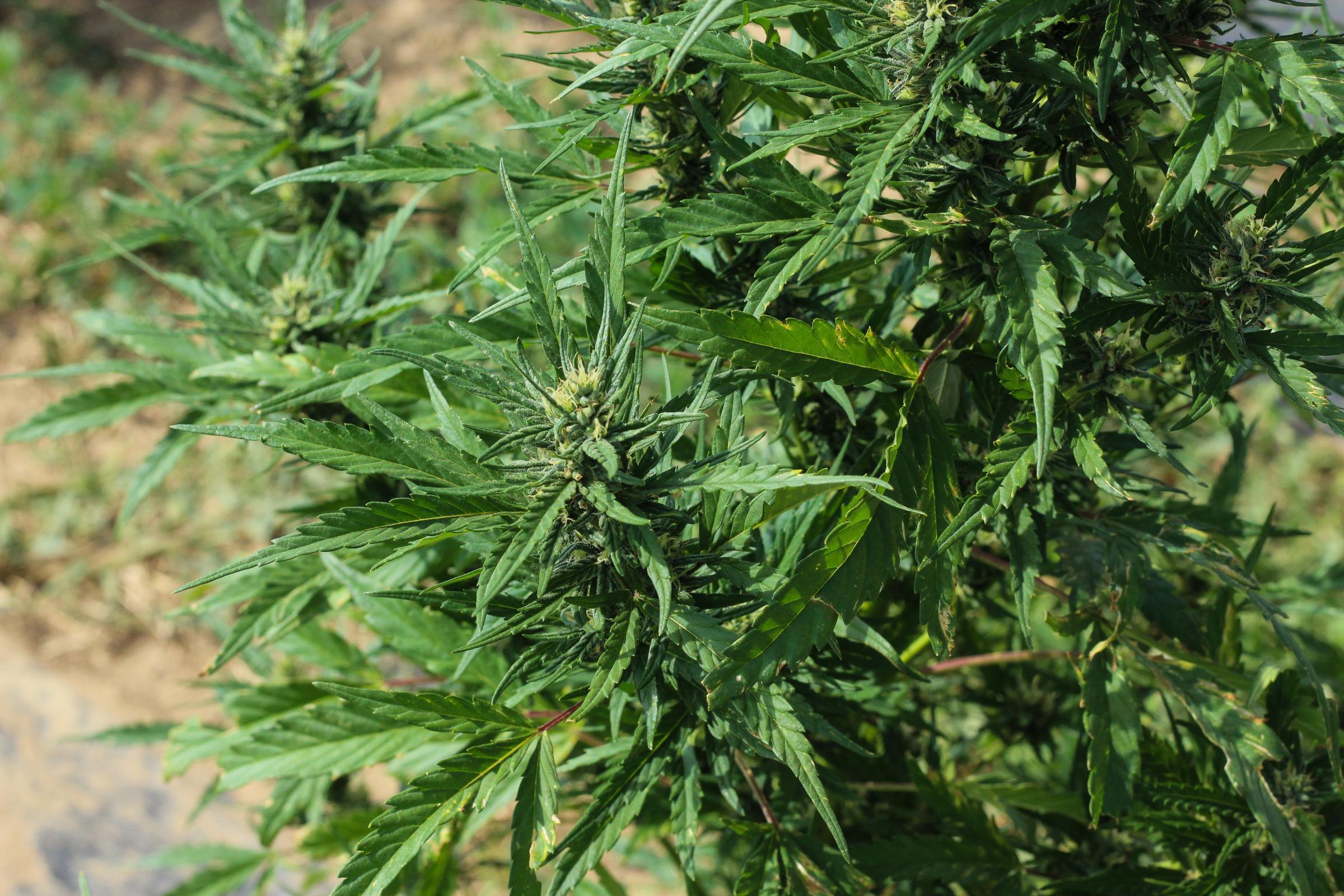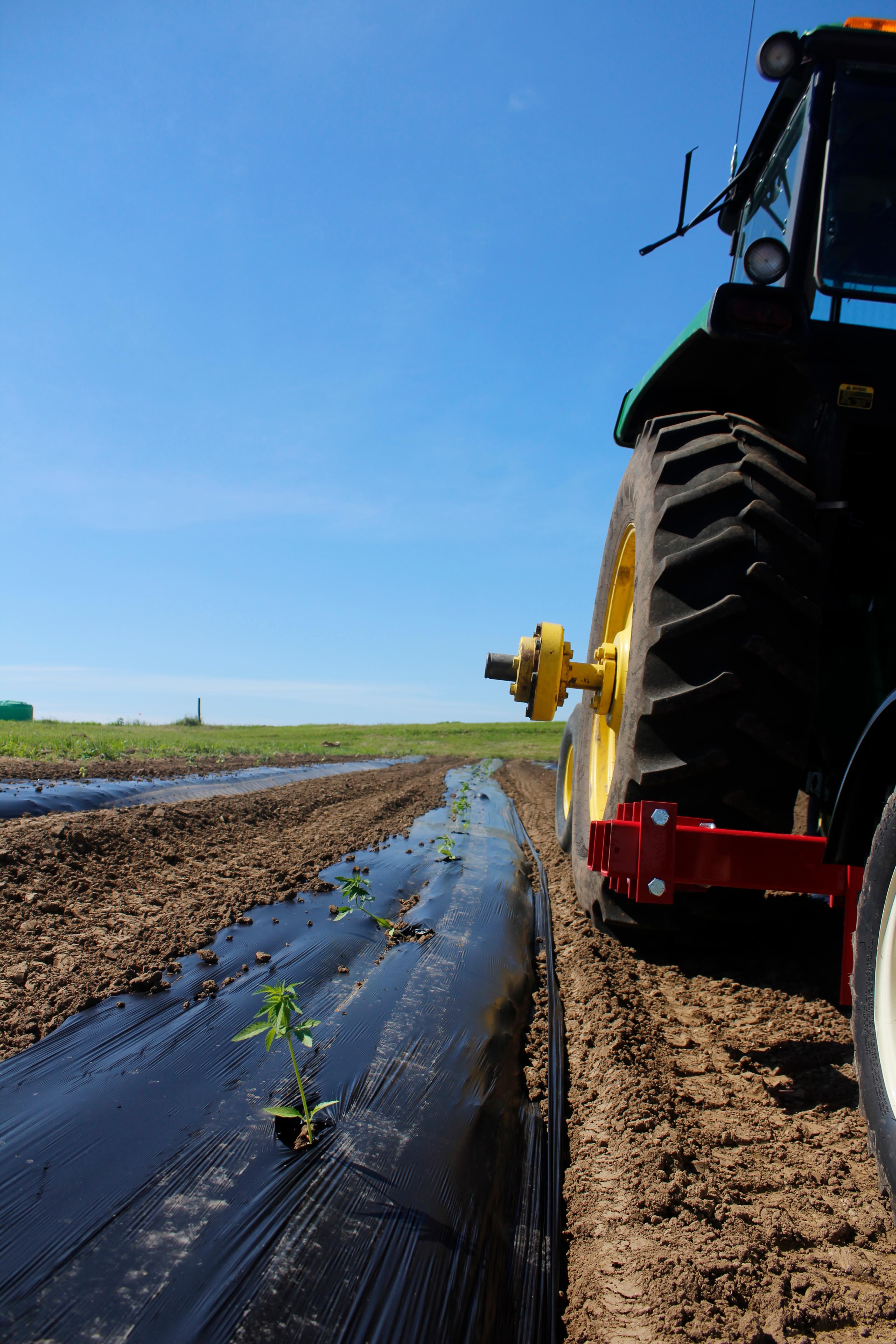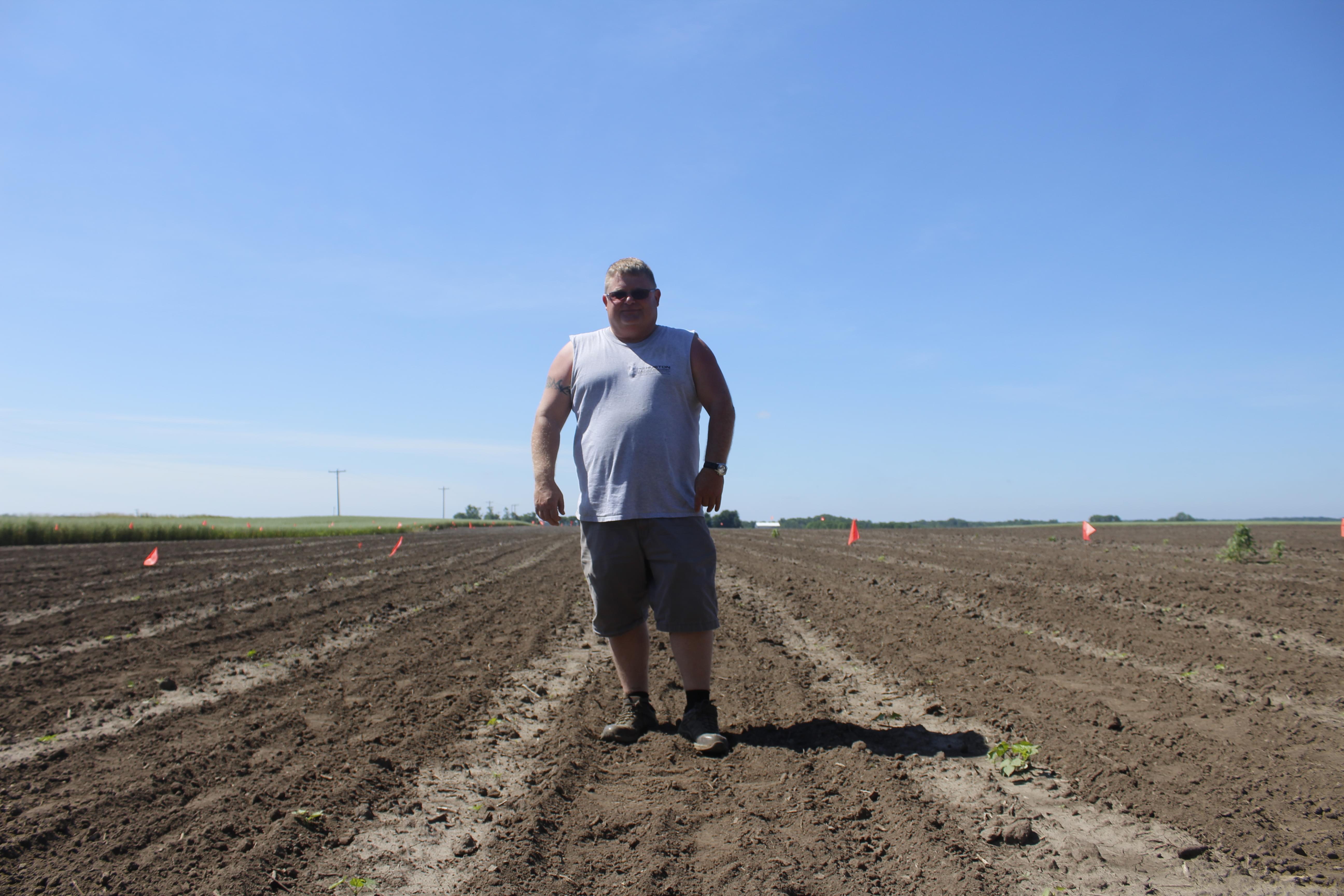Hemp And The Challenges Of Farming’s Frontier

Logan Bird waters about 90,000 hemp seedlings on Andy Huston's farm in western Illinois. Madelyn Beck/Harvest Public Media
There’s millions of dollars to be made from growing hemp, which for years was lumped in and vilified with its sister plant, marijuana. With the government loosening laws around growing hemp for the first time in more than 80 years, some states are charging ahead and letting farmers plant it — even before federal regulations are in place.
Those states aren’t just getting a head start, though. They’re seeing significant challenges that hemp farmers will face for years to come, things like seed fraud, weather and a lack of machinery.
“I've done pretty much everything to really immerse myself in (hemp) because I started getting questions like crazy,” Phillip Alberti, a commercial agriculture educator with the University of Illinois Extension.
Over the last several months, Alberti has become somewhat of a hemp expert so he can help Illinois farmers — more than 500 of which are licensed to farm the crop this year. Of course, some things he can’t do much about, like the torrential rainfall that delayed planting across the Midwest.
“Hemp likes water, but it doesn’t like wet feet,” he said.
Besides that, Alberti said he’s heard a lot about seed fraud. People around the U.S. have reported getting either different seeds than they ordered, ones that have low germination rates or male seeds mixed in with female seeds.
That’s an issue because, while hemp can be used as a fiber or food, most new U.S. hemp farmers are looking to grow it for CBD oil, or cannabidiol oil, which requires female seeds only.
“I think it’s safe to assume north of 90-95% of (Illinois hemp grower) applications were with the intent of doing it for CBD,” Alberti said.

Hemp grows at a farm in Lafayette, Colorado.
Seed fraud can cost people dearly, as a pound of seed easily eclipses $10,000. Many farmers who were burned by bad seed orders have turned to HempLogic, a hemp company in Washington state. Its business is booming.
“Unbelievable, unbelievable,” John Tucci, vice president of sales, said about the influx of calls and business. “We went from two guys trying to get together a blog to hey, we need to get a president and we need to do this the right way. We have big clients now.”
HempLogic even started selling hemp consulting packages because there was such a hunger for advice. Tucci said he’s constantly cautioning farmers to be conservative with their first crop of hemp.
“Don’t get caught under the ether,” he said. “Don’t get caught under the gold rush. It’s not ‘go big or go home’ right now. It’s ‘go small and learn and scale up.’”
New industry, missing links
From 1937 through December 2018, federal regulations largely kept hemp from growing because it was lumped in with marijuana. Hemp for clothing, building materials and other things were outsourced from China, Canada or Europe.
National Hemp Association Chairman Geoff Whaling helped convince Congress to fully legalize hemp. But he also recognizes that it’ll take years before all the infrastructure and processors are in place to support budding hemp farms.
“I know that every single penny that they invest into their farming crop is so that they can generate a revenue and stay on the family farm,” said Whaling, who is part of several groups in Pennsylvania that represents small and large farmers. “I would hate to see farmers wanting to jump into hemp and there not be a marketplace. So you know, be cautiou(s), buyer beware are words that I use continuously as we move forward.”
The U.S. Department of Agriculture’s regulations are expected next year, and Whaling said he hopes those account for the issues hemp farmers may run into. For example, if one farmer grows hemp for CBD while a neighbor grows for fiber only, the male plants on the fiber farm could pollinate the plants growing for CBD and ruin the crop.
“The pollen from hemp can drift as far as seven, 10, some say as far as 20 miles,” he said.
Whaling said the hemp industry, while legal, will take years to fully build out. He’s concerned farmers are putting a lot of money into hemp without even having equipment to process the entire plant.
“There is no harvesting equipment, there isn’t a huge seed supply, there is no decordification facilities, which are necessary components to tear this crop apart into its raw components,” he said.

Andy Huston said he's planting some of his hemp this year with equipment that was designed for vegetables. The plastic helps combat weeds, which can be an issue with a crop that has to be grow organically.
There are many processing facilities planned in the Midwest, including small decordication outfits. In Illinois alone, more than 100 processors are already licensed to start turning the crop into a product.
In Omaha, Nebraska, John Lupien is working on efficient decordication with his new company Hemp Technology Innovations, or HTI. He’s worked in a few similar companies before, basing his designs on old U.S. hemp manufacturing techniques — before it was heavily taxed in the 1930s — or modifying designs of processors for other crops.
He said the market is out there, but there’s just a gap between farmers hoping to grow hemp and companies wanting a processed product.
“There’s a lotta, lotta companies out there that wants this material. Whether it’s in a non-woven form for something like tampons or whether it’s in a plastic form for all sorts of composite applications,” he said.
Hemp in the field
The hemp industry is up against trade and banking challenges beyond weather and seeds, but some have still found a way to make it work. People like Andy Huston near Roseville, Illinois.
He has about 90,000 cannabis sativa seedlings sprouting in a greenhouse, with even more planted in a nearby field. Huston is one of the few in the state who got a jump-start on growing hemp last year through a research test pilot and his business American Hemp Research.
And the first thing he wants people to know: “Hemp is not marijuana … they’re both cannabis, but there’s a big difference between them.”
Congress defines industrial hemp as a cannabis sativa plant with less than 0.3% THC, or tetrahydrocannabinol. That’s the compound in marijuana that makes people high.

Andy Huston stands between two rows of hemp growing in a field near Roseville, Illinois. He co-runs American Hemp Research and is one of the few people in Illinois who grew hemp legally last year.
Huston touts the health benefits of CBD oil, which is what he largely aims to produce with this crop. He even bought his own CBD extraction machine so he can process hemp right there on his farm.
“With the acres that we have, it should keep our oil extractor going for 12 months,” he said.
Because he grew hemp last year, he has seeds to sell this year, as well as his experience with the crop to share with his customers.
He’s had to change how he does things. Like many others, he had to harvest by hand last year. But he’s trying a disc mower this year, something used for hay.
Huston is also trying to limit weeds. There aren’t any pesticides approved for hemp yet, so it’s grown organically, which Huston said is what consumers are asking for anyway.
“They’re leaning more towards the less pesticides the better,” he said.
So, Huston’s hemp has been doing well, but he’s still farming corn and soybeans and said he still has a lot to figure out.
“I think I will probably be learning about hemp for the rest of my life,” he said, “but that’s what makes it pretty interesting.”
Follow Madelyn on Twitter @MadelynBeck8

